In this special guest blog post, Hornby’s Sam Coventon explores the history of Flying Scotsman models produced by the famous railway modelling brand—including a preview of some brand-new vehicles launching for the Flying Scotsman Centenary campaign.
Hornby have very generously signed up as lead sponsor for the loco’s events during its centenary year.
Hornby has produced countless models of Flying Scotsman over the years. One of the first of these was the tinplate 0 gauge model complete with its 4-4-2 wheel configuration, a limitation of the time as the model used the same chassis and mechanism from the standard 4 wheel tank engine. Since then, a model has appeared with every number the locomotive wore and every livery, LNER Apple Green, Wartime Black, BR Blue and BR Green.
As well as being a mainstay of the Hornby range for time immemorial, Flying Scotsman has been the introduction for many into the hobby of modelling with many train sets featuring the iconic locomotive created and sold as well as a Railroad version of the model, perhaps the largest selling model in our introductory range.
Now, in 2022 and in preparation for the centenary celebrations in 2023, Hornby have announced a suite of models for this historic occasion. These are not re-releases but are instead bespoke models to be released under the Hornby Dublo branding with the specifications that you would come to expect from the name.
Each Hornby Dublo Flying Scotsman model is fitted with a diecast locomotive body, enhancing not just the weight and therefore pulling power but the quality of the decoration applied.
The finish achieved on Hornby Dublo models is much closer to that of a full size locomotive than can be achieved on plastic. As well as this enhanced decoration, the models are 8 pin DCC ready allowing for fine control on digital layouts. Also featuring on these models is a new style of locomotive to tender connection, allowing the two to be easily connected and disconnected while still allowing electrical connection and functionality between the locomotive and tender.
The medley of models presented cover all eras of Flying Scotsman’s career, presented here in chronological order and covering:
- Outshopping in 1922 as the then un-named 1472
- The named and renumbered 4472 as at the British Empire Exhibition 1923
- The post war re-numbered 103 in LNER colours
- The locomotive as restored under the ownership of Alan Pegler, with A3 boiler and banjo dome but in LNER colours and lettering, a streamlined corridor tender and red nameplates
- The locomotive in its iconic U.S.A Tour guise with modifications including a headlight, bell, cow-catcher and second tender. Flying Scotsman had its cow-catcher painted in two different colours while it was in the U.S, with the red colour being painted over in black during a layover in St. Louis, Missouri between June 30th and July 6th 1970, making this model a pre-St. Louis version. The cow-catcher, originally red to compliment the buffer beam it was attached to, was painted black to make it less conspicuous helping it to blend in
- The locomotive as it will appear in its centenary year of 2023 as well as how it would have looked during the late BR era, in late BR colours with German Style smoke deflectors
One thing that is different from previous Hornby Dublo models is the presentation box each of these new models is to be shipped in. Hinged and with a history based around the specific guise of the model on the inside of the box lid these models will share this box space with a commemorative medallion cast in metal, all of which can be seen in the below mock up image.
Hornby are honoured to be helping to celebrate this occasion and we look forward to seeing what the future has in store for this globetrotting locomotive.
But it is not just this set of Hornby Dublo models that we are announcing, a range of models under the Hornby Playtrains branding have been created for our younger modellers, including Scottie the Express engine.
This new collection, a collaboration between Hornby Playtrains and the National Railway Museum, celebrates not only Flying Scotsman but also other famous locomotives that are part of the National Collection.
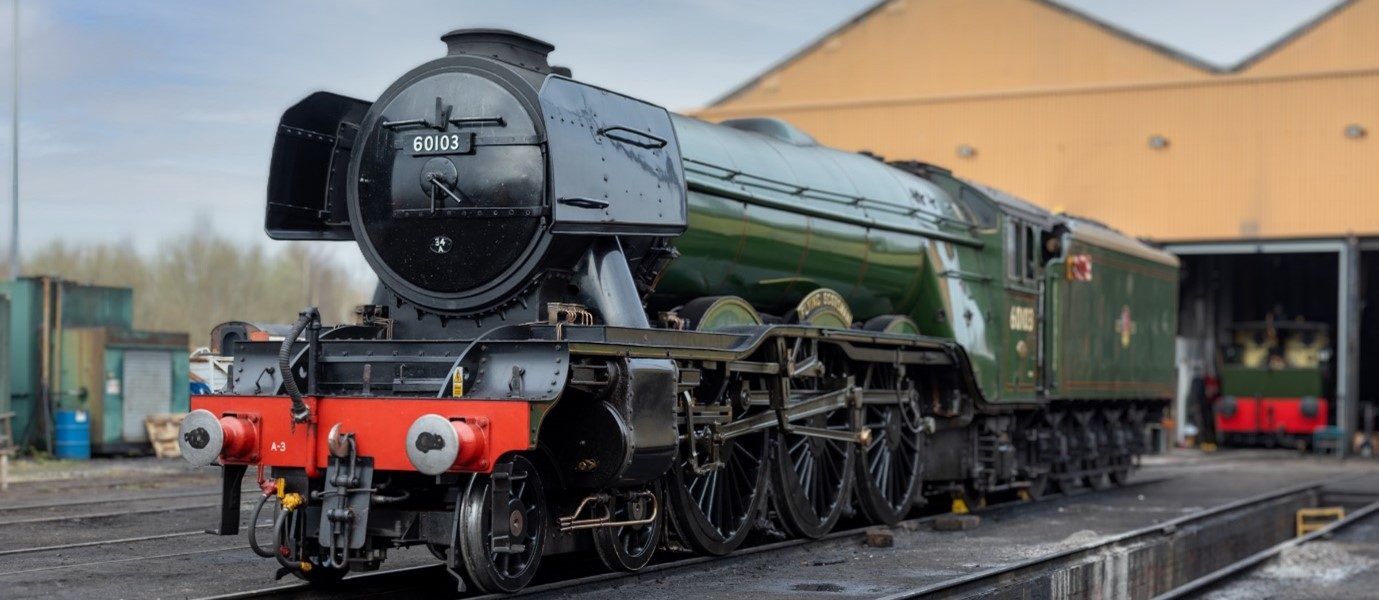

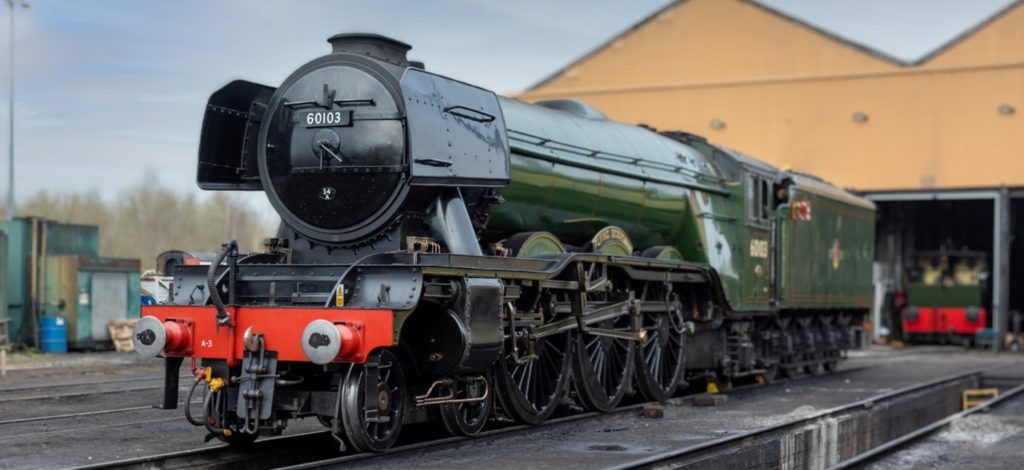

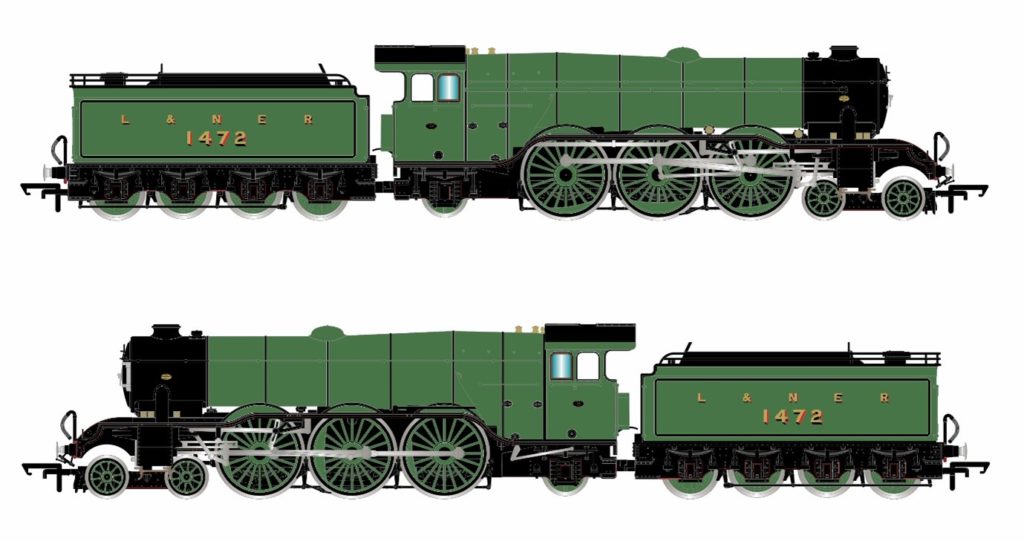
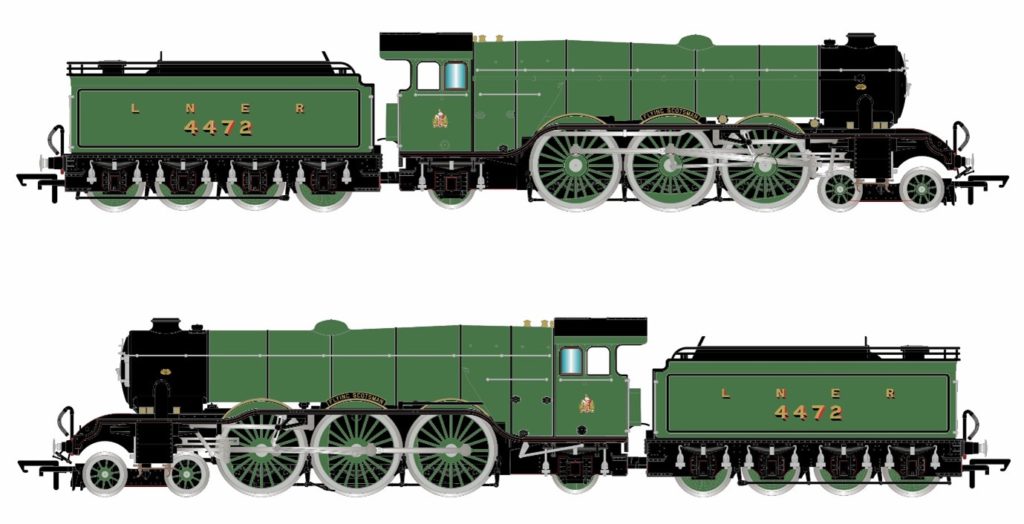
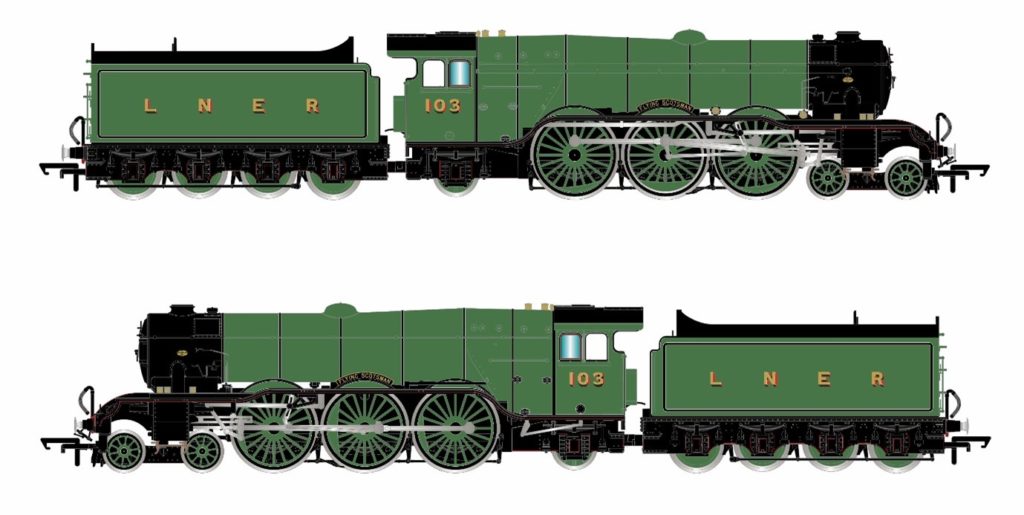
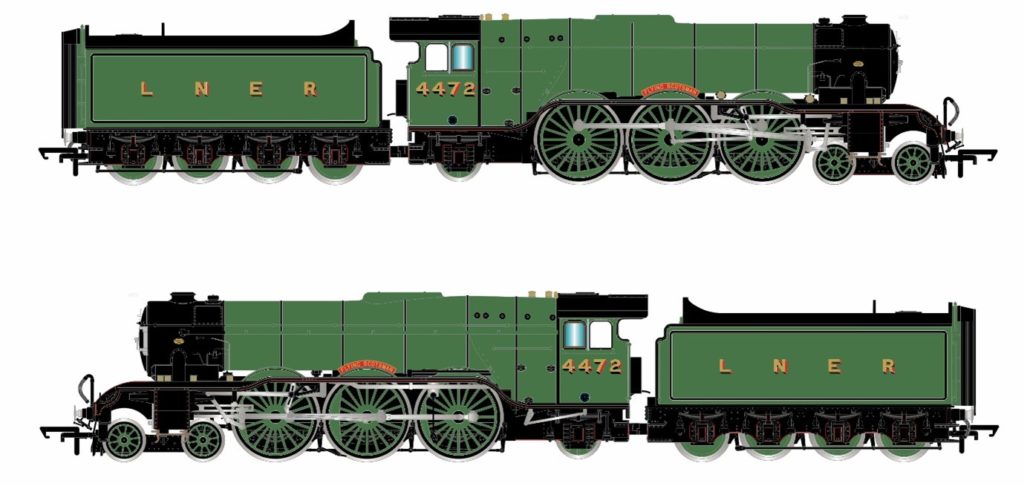
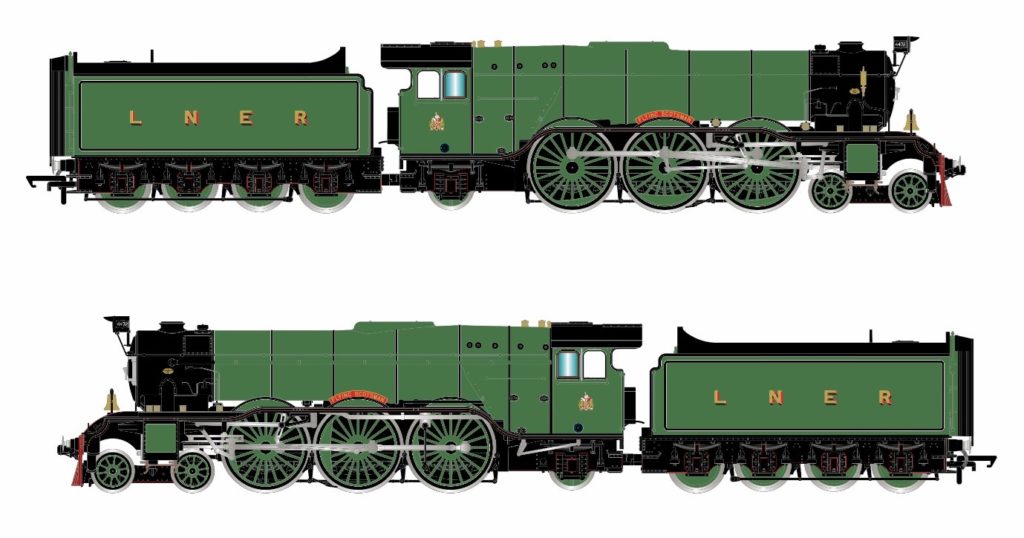

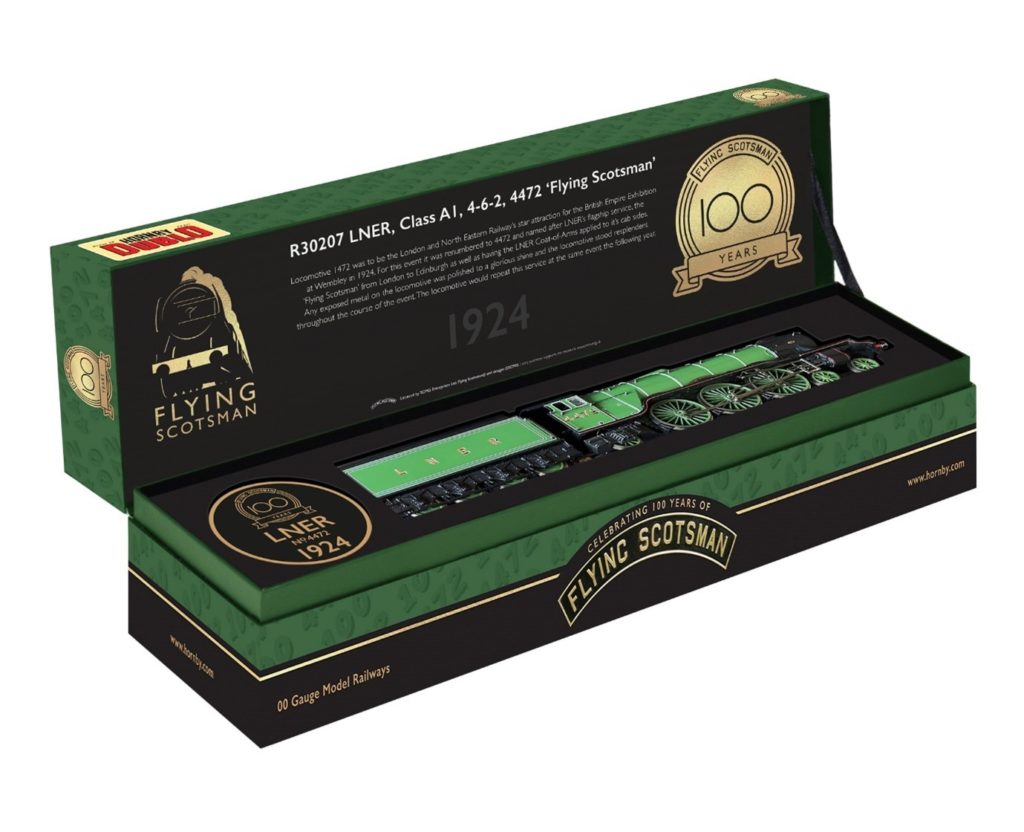
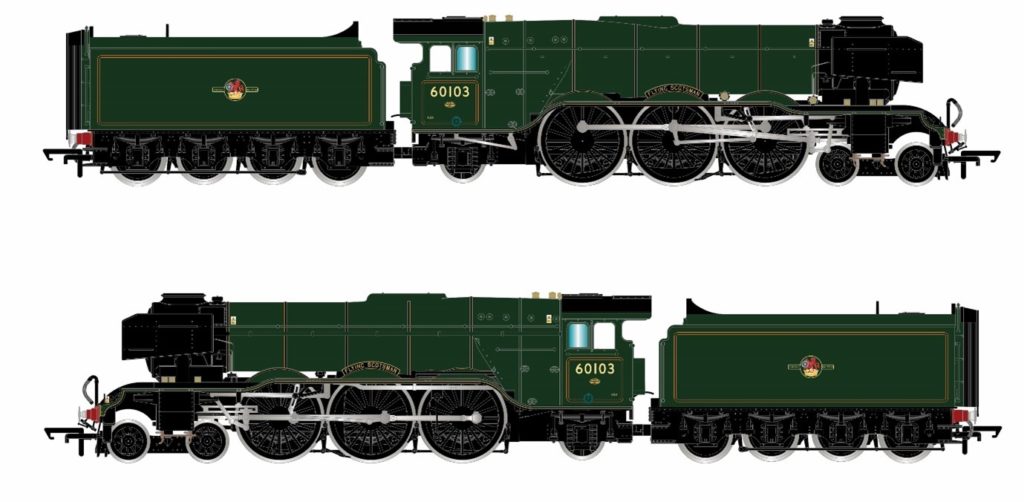
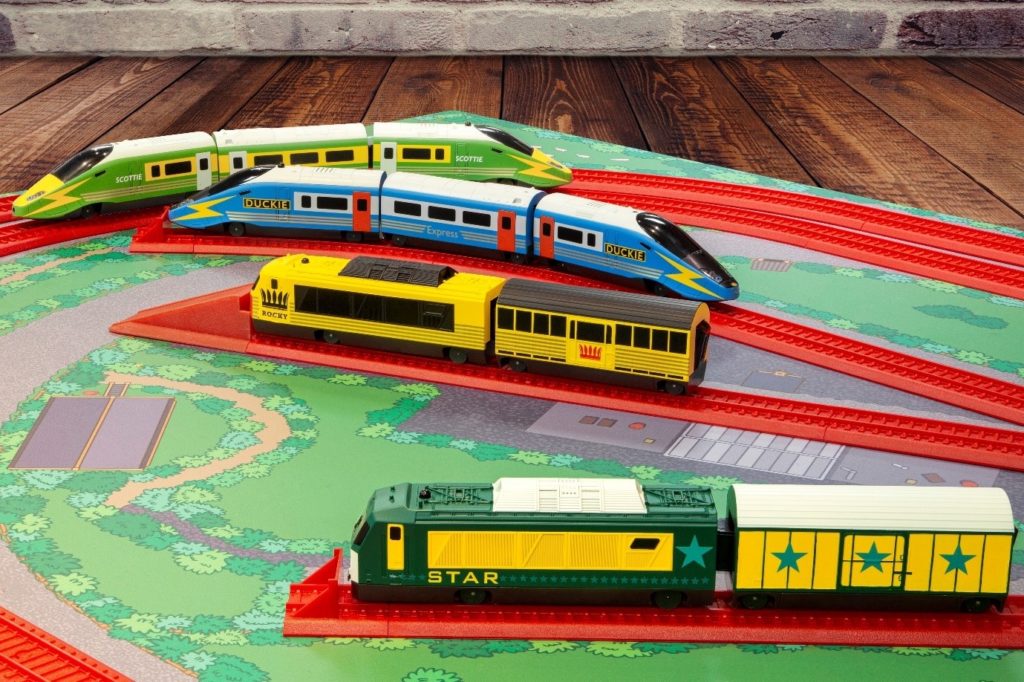
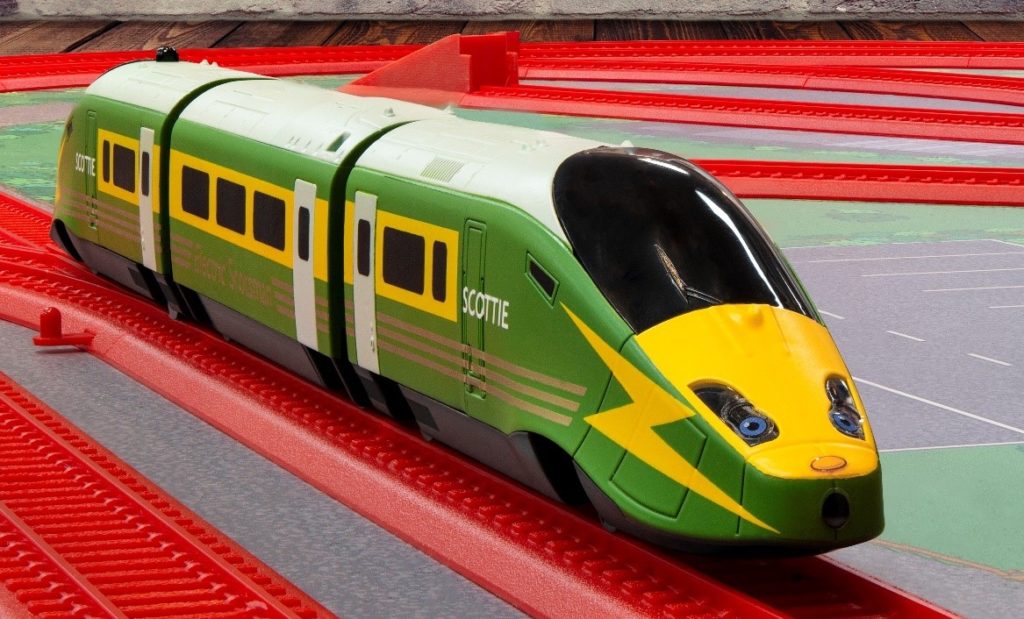
I hope Hornby are paying the NRM for this advertisement hidden in blog form!
As mentioned in the intro, Hornby are the lead sponsor of Flying Scotsman’s centenary events and we have made no secret of that. This post is intended to share their passion for model making and explore the history of their Flying Scotsman range, in a similar vein to our own exploration of the full-size loco’s history. The museum has received no payment for the publication of this blog post and its editorial content was agreed upon by the NRM and Hornby together. We were also under no obligation or incentive to publish this post.
Congratulations !!!!! From Green Bay, Wisconsin, U.S.A. !!!!! And when The Flying Scotsman 4472 visited the NATIONAL RAILROAD MUSEUM in August 1970 during its nationwide American tour, when 4472 was parked alongside 2 other famous steam locomotives, with the UNION PACIFIC 4017 4-8-8-4 ARTICULATED MALLET. And also the 4472 cousin with A-4 Streamlined Gresley 4-6-2 Pacific Number 60008 and named the “DWIGHT D. EISENHOWER ” in 1945 after WW2 to honor the U.S. Army Commander of S.C.H.A.E.F. in the European theatre; yet originally named “GOLDEN SHUTTLE”. BUT…since all the Original Founders of our NRRM have since died, this letter is to Honor them !! THANK YOU !!!!! GOD BLESS EVERYBODY !!!!! 🇺🇸 🙌 🙏 ❤. ALLELUIA!!!!! AMEN!!!!! MON., OCTOBER 23. 2022, A.D.
OMG IS HORBY SCOTSMAN AAAAAAAAAAAAAAAAAAAAAAAAAAAAAAAAAHHHHHHHHHHHHHHHHHHHHHHHHHHHHH
Will be interesting to see what the prices are ,for these models.the way the current financial rate of inflation is going, you will be lucky to get change of a thousand pounds. The reason I am speculating is ,I bought the fab four hst train 2 years ago, priced at a 125 pounds,2 years on (present day) it’s now 200 pounds. One hell of a jump. I can only assume hornby will be charging a small fortune.well if I cannot afford it ,I 2ill not be buying it
I have a apparent 50s vintage flying Scotsman model but I can’t find anything about it
Did the Flying Scotsman have a working coupling at the front of the loco, so that it could hook up to other cars and travel in reverse?